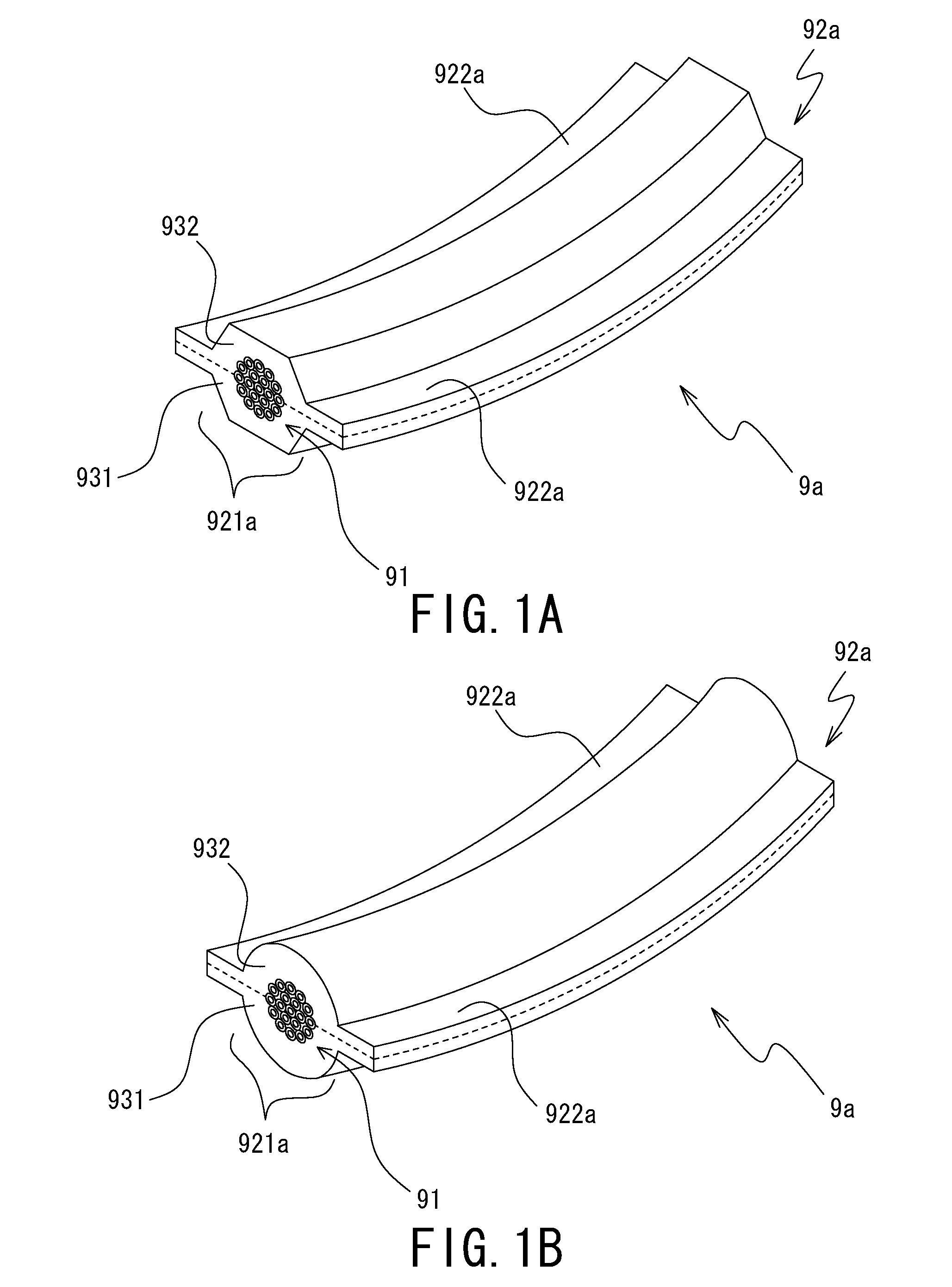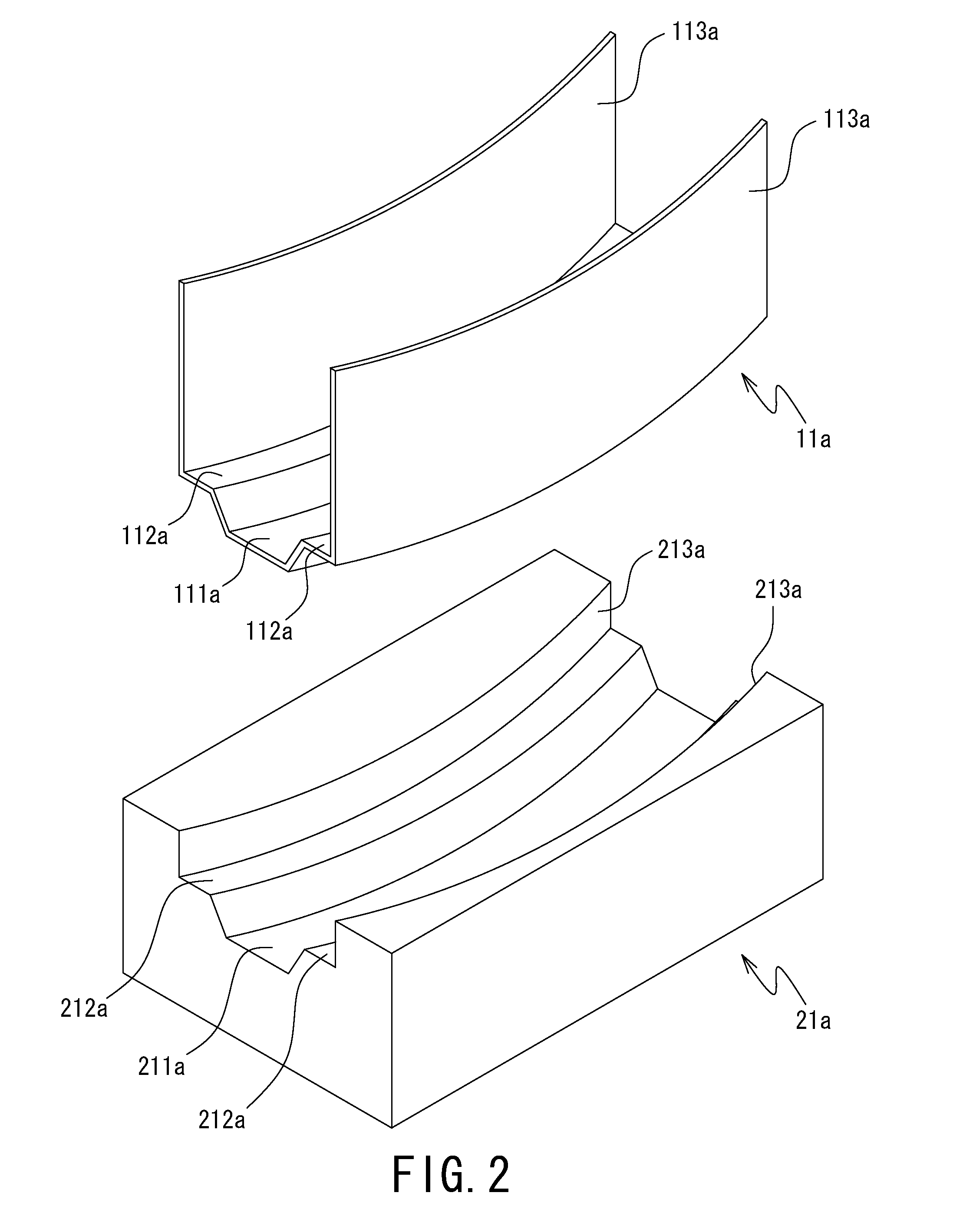Wire harness manufacturing method
a manufacturing method and wire harness technology, applied in the field of wire harnesses, can solve the problems of increased manufacturing cost, increased price of the wire harness to which the shape maintenance member or the protector is attached, so as to prevent the deformation prevent the attachment of the covering member, and prevent the effect of unexpected deformation and undesired deformation
- Summary
- Abstract
- Description
- Claims
- Application Information
AI Technical Summary
Benefits of technology
Problems solved by technology
Method used
Image
Examples
first embodiment
[0130]Next, tools used in the method for manufacturing the wire harness according to the present invention will be described.
[0131]In the method for manufacturing the wire harness according to the first embodiment of the present invention, a first lower holding tool 11a and a pair of molds including a first upper mold 22a and a first lower mold 21a (e.g. metal dies) are used. FIG. 2 is an external perspective diagram schematically showing structures of the first lower holding tool 11a and the first lower mold 21a, and FIG. 3 is an external perspective diagram schematically showing a structure of the first upper mold 22a. Note that in the first lower holding tool 11a and the first lower mold 21a, the upper side in FIG. 2 is the side facing the first upper mold 22a. In the first upper mold 22a, the upper side in FIG. 3 is the side facing the first lower mold 21a. Hereinbelow, for the sake of convenience of explanation, regarding the first lower holding tool 11a and the first lower mol...
second embodiment
[0228]FIG. 8 is an external perspective diagram schematically showing structures of the second upper mold 22b and the first upper holding tool 12a used in the method for manufacturing the wire harness according to the present invention. In FIG. 8, the upper side in the figure is the side facing the first lower mold 21a. Hereinbelow, for the sake of convenience of explanation, the upper side in the figure will be referred to as the lower side of the second upper mold 22b and the first upper holding tool 12a, and the lower side in the figure will be referred to as the upper side.
[0229]The first upper holding tool 12a is a tool having a function of pressurizing the first molded body 931 and the second molded body 932 and a function of maintaining the predetermined part of the manufactured first wire harness 9a (especially, the molded covering member 92a) in a predetermined shape (in other words, preventing unexpected deformation or undesired deformation), in the process of manufacturin...
third embodiment
[0277]FIGS. 15 to 17 are cross-sectional diagrams schematically showing predetermined processes of the method for manufacturing the wire harness according to the present invention. Respectively, FIG. 15 is a diagram showing a state where the second upper holding tool 12b and the second lower holding tool 11b, in which the first molded body 931, the predetermined part of the electric wires 91 and the second molded body 932 are provided, is placed on the second lower mold 21b. FIG. 16 is a diagram showing a state where the first molded body 931, the predetermined part of the electric wires 91 and the second molded body 932 are pressurized with the third upper mold 22c and the second lower mold 21b. FIG. 17 is a diagram showing a state where the predetermined part of the manufactured the second wire harness 9b of the present invention, in a state where it is held between the second upper holding tool 12b and the second lower holding tool 11b, is removed from the third upper mold 22c an...
PUM
 Login to View More
Login to View More Abstract
Description
Claims
Application Information
 Login to View More
Login to View More - R&D
- Intellectual Property
- Life Sciences
- Materials
- Tech Scout
- Unparalleled Data Quality
- Higher Quality Content
- 60% Fewer Hallucinations
Browse by: Latest US Patents, China's latest patents, Technical Efficacy Thesaurus, Application Domain, Technology Topic, Popular Technical Reports.
© 2025 PatSnap. All rights reserved.Legal|Privacy policy|Modern Slavery Act Transparency Statement|Sitemap|About US| Contact US: help@patsnap.com



